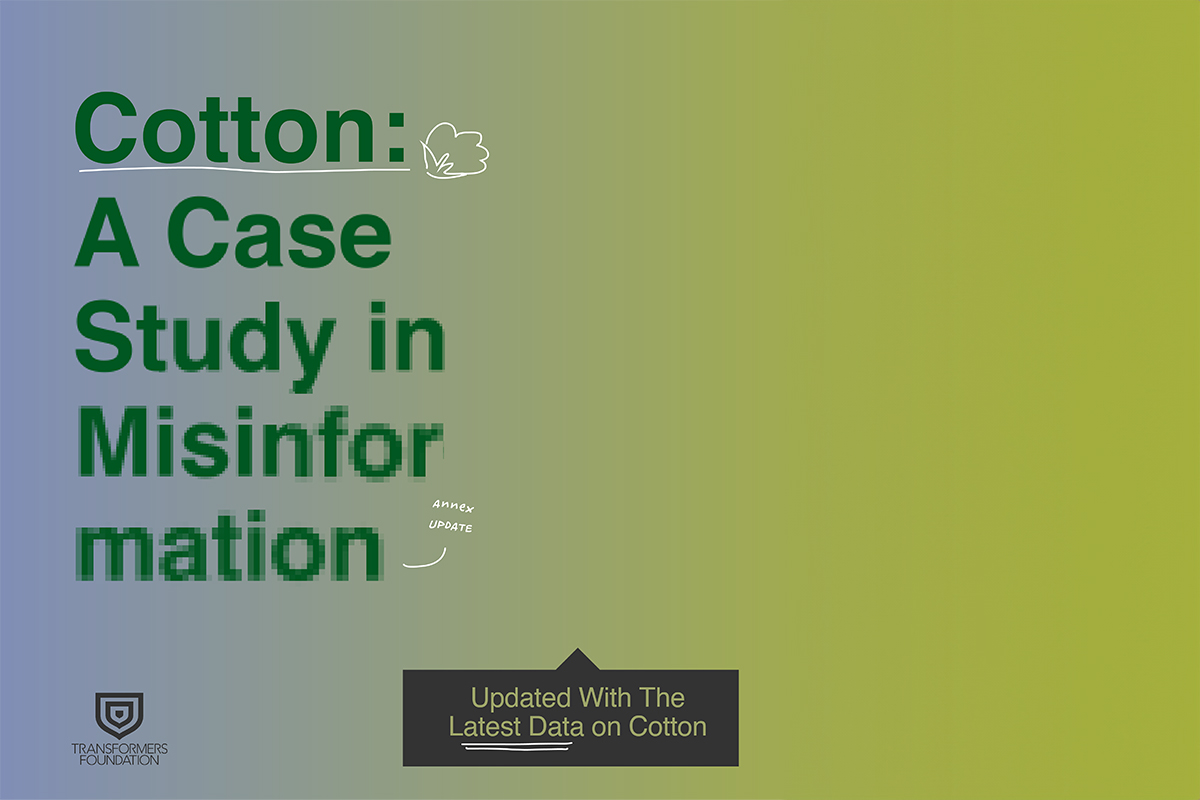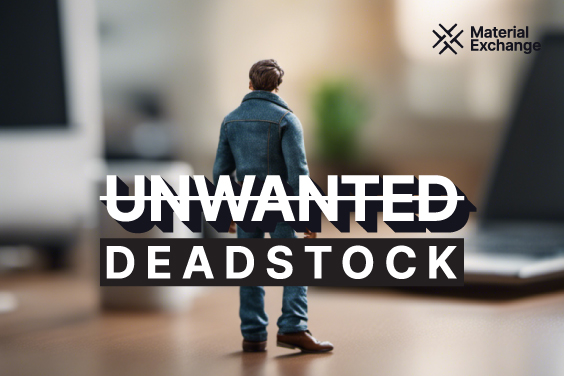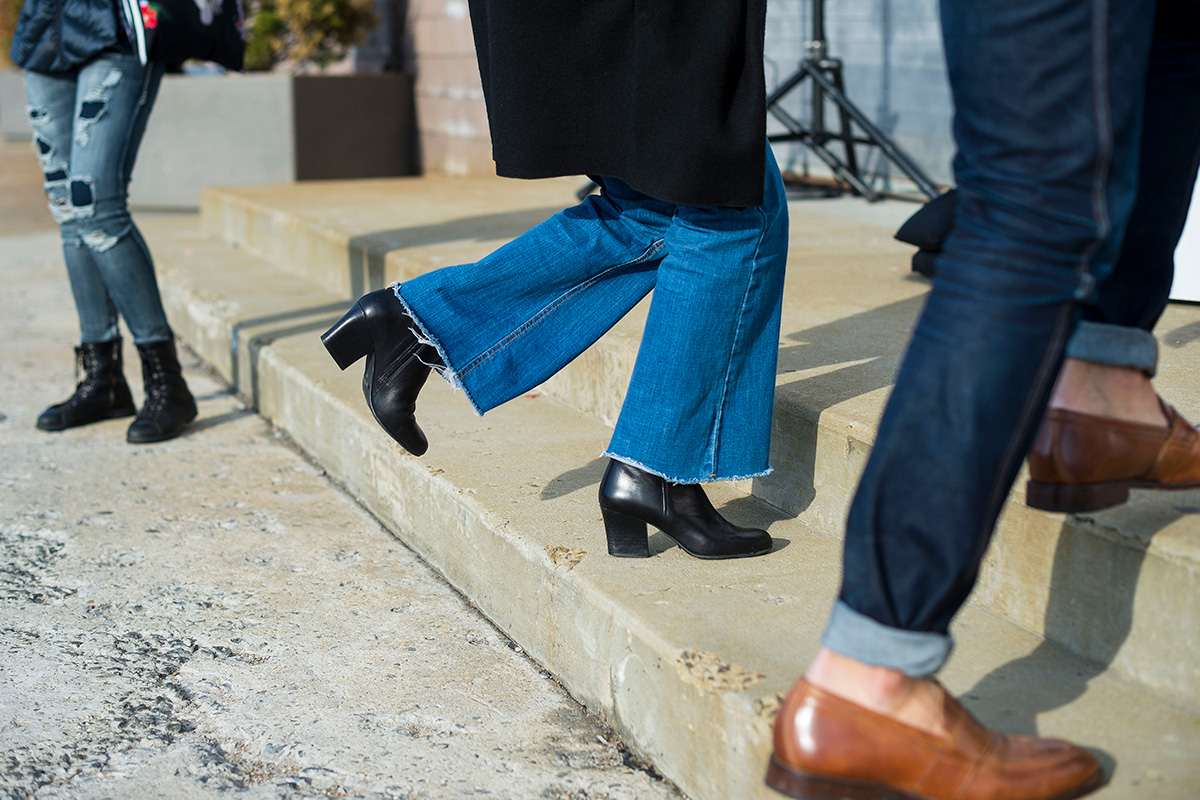Kingpins Exhibitors: Officina+39 | Agent of Change
Welcome to the first of a series of stories about Kingpins Exhibitors. We are proud of the depth of knowledge and experience in our community and this series is a way to share that with all of you.
Officina+39, the pioneering chemical company based in Biella, Italy, has been providing R&D and chemical applications for the textile and apparel industry for more than 30 years. We recently caught up with Chief Executive Officer Andrea Venier to talk about his company, his competition and how a chemical supplier envisions a sustainable future.
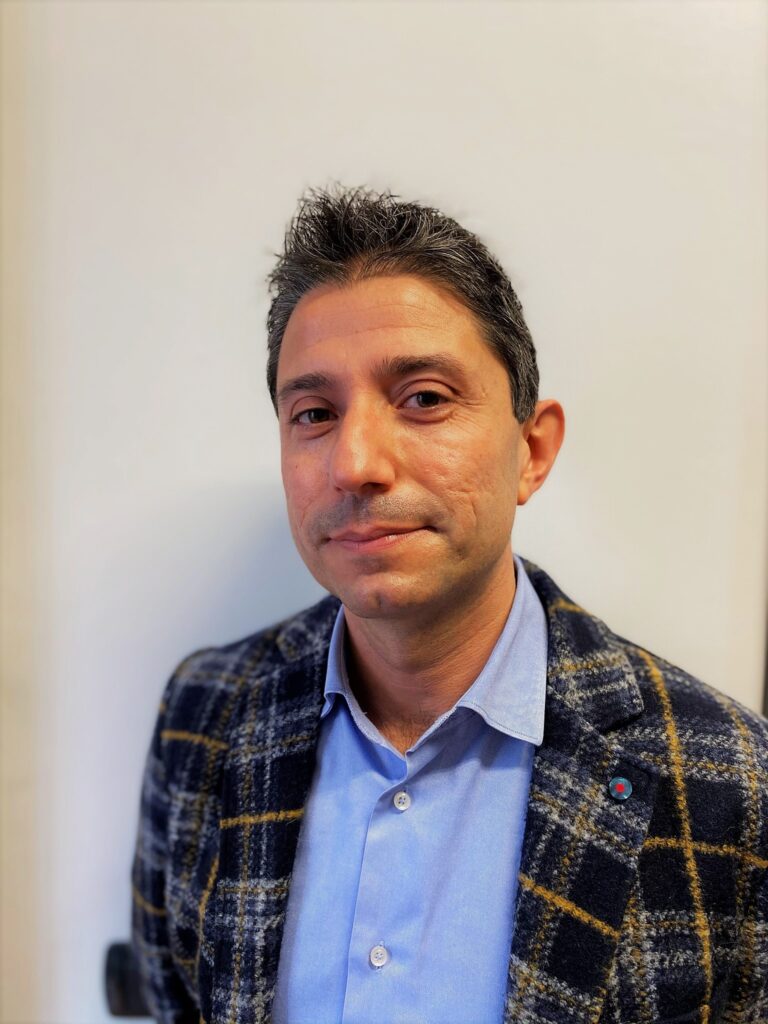
Looking for the audio version? Listen here:
What is the difference between your company and other chemical companies like Dystar, Archroma, Garmon, etc.
ANDREA VENIER: First let me say, this is an embarrassing question. But I can tell you, we are today coming from our past. This legacy and lived experience [has] led us to be different from our competitors. We are located in Biella, an Italian provincial town located in the north of Italy between Turin and Milan. It is a city under the Alps, the most important mountains in Europe. It is a city with low traffic and all the simple ingredients for a high quality of life. The Alps and its nature [reminds us] that we must have respect for what surrounds us.
Biella [is known] to the rest of the world through its high-impact style. The most important, high-end fabrics come from Biella, for formal suits mainly. A lot of very important companies are located here. One is Zegna. Zegna is a typical family name of our city, and they still are in Biella. Another important name is Fila. Fila, you know, is a very informal sportswear [brand]. Fila is another typical surname of our city. Twenty years ago, it [was] sold to Asian company, but [it was] born in Biella. I can remember when I was child, when Bjørn Borg, the famous tennis player, came to the city. I stood for three hours just to catch a photo in front of the Fila headquarters. [The brand was] really important in the past century, and [shares] this link between textiles and the world.
Today, Biella is an important artistic, creative center. In 2019, UNESCO designated Biella as one of the creative cities of the world. This is an important prize. There are many artist initiatives in our province that create a model for our business. The most important for the city — and for us — has been Michelangelo Pistoletto and his Cittadellarte Foundation. Michelangelo Pistoletto is one of the most famous leading artists. [He] is the founder of Cittadellarte Foundation, [which] inspires our business thinking. He created a symbol he called the Third Paradise. The symbol is an infinity symbol [with] a bigger circle [in the center]. He says that this is the third phase of humanity. We have to realize a new balance and connection between the two opposite circles: Artifice and nature. The new circle in the middle is bigger because it’s the balance circle that we have to work all together to find. This is a powerful symbol.
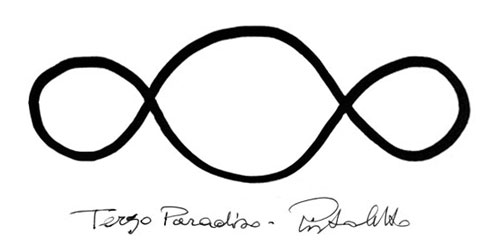
Officina+39 is a member of B.E.S.T. ethical system, the Pistoletto Foundation’s Cittadellarte textile department. I’ve really been inspired by what they are doing there, frankly speaking. When I started to work with them, I found the spark to make our company part of the solution.
We are a family business and family is important for me. Textiles are a part of our blood – not only for the city, but also for our family heritage. My [maternal] grandfather was creative head textile designer of one of the most important major companies [in Biella], Cerruti 1881. My paternal grandfather was a tailor. I can remember him [creating] a complete suit from scratch, using the best wool, doing the fitting, etcetera. The whole process took about three weeks. I learned that good things take time and effort.
This background taught me about quality and also taught me to have respect for where we are living. To recap in a few words why we are different. I can tell you our strength is a lot of passion, just enough curiosity, teamwork, and a touch of madness.
Do you focus on dyeing fabrics or garments?
ANDREA VENIER: We are mainly focusing on denim and garment dyeing, so not only on dyeing but also on denim finishing. However, we are working also on fabrics. We started providing chemicals [for] traditional textiles [in 1992]. In 2009, we started Officina+39 focusing on denim and garment dyeing. But nowadays, we are again approaching fabrics, to try to transport some of the technology we’ve developed for the garments and denim to fabrics.
What was your most successful product in the last two years and why?
ANDREA VENIER: We have been working a lot during the last years on water conservation. For us, the SDG 2030 Agenda is very important. As a chemical company, goal 6, the SDG dedicated to water, is a mission for us.

We have developed a new technology, that we call Aqualess Mission, to reduce 75 percent of the water typically used in denim and garment laundry processes. These innovations are evidence of our commitment for more sustainable production. We have three products. One is the laser activator. Then we developed Aqualess Aged and Oz-One powder. These two products can replace the stonewashing and the bleaching. Typically, the stonewashing and bleaching steps use many liters of water. Using Aqualess Mission, we can replace the stonewashing with Aqualess Aged and the bleaching with Oz-One powder, which uses no water. We are using water just during the rinsing steps [and] in a conventional machine. Traditional processes use 52 liters of water. Using this new technology, we can cut that down to 12.5 liters only.
We started the idea [for these technologies] during the first lockdown in March 2020. When we are facing difficult challenges, our mindset is to try to transform challenges into opportunities. And this has been the result.
What products do you expect to be the most successful in the next 2-3 years?
ANDREA VENIER: The other important product in our range has been Recycrom™, our patented technology that transforms textile waste into colored powdered dyestuff. We are able to provide a full range of dye colors in powdered form, obtained through our cutting-edge upcycling production process that involves textile fibers from used clothing and manufacturing textile waste — so pre- or post-consumer [waste]. We can replace the conventional synthetic dyestuffs in dyeing and printing coating applications.
Recycrom™ [was introduced] four years [ago]. In September, it will be five years. But you know, new technology takes a lot of time to be implemented and introduced to the brands. Nowadays we are happy, there are some brands like G-Star, that started to use it in production and other projects are running faster now. So really, we hope that 2022 will be a Recycrom™ year for us.
What protocols would you suggest the industry adopt so that consumers could feel the clothes they wear are not toxic?
ANDREA VENIER: Protocols mean, most of the time, certifications. Does all this certification help the consumer to buy better clothes? Maybe. But, for sure, not enough. Our industry must do much, much more here and many certifications and protocols create a lot of confusion, according to me. And let me say something that is not really politically correct. It looks as if sometimes maintaining this confusion is a strategy. In Italian, we say “Change everything and you change nothing.”
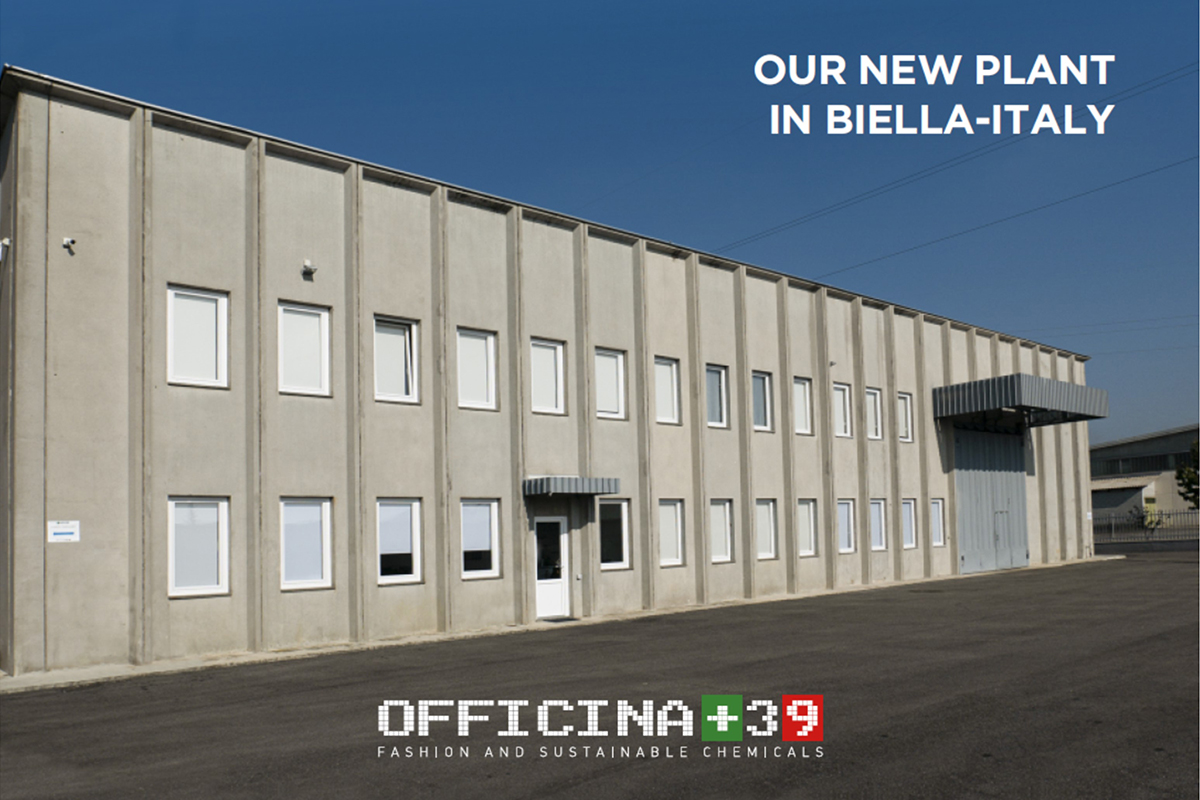
We need first to simplify the communication with the consumer. Improvements have been done during the last years, for sure. Maybe the solution will be to have a shared protocol, based on transparency and data. Every company could adopt it like an ISO standard. In the end, to give better products to the final consumer, I think [we need] a few things: Clear rules to ban dangerous products; a lot of transparency and a code of ethics to sign by all members of the supply chain.
Let’s switch this over to the brand side. What protocols would you suggest brands take to really feel that what they are getting is fully the chemical they want and not being substituted in production? You addressed this in terms of the unified standards, but is there something more that can be done on the brand side above and beyond that?
ANDREA VENIER: Here, also, I think transparency and traceability is the only solution. Until today, only partial traceability has been done. An important job surely, but the final part is missing.
Today, for example, brands are not asking their vendors for a report on the chemicals used for a specific garment. In cases related to a specific product like our Recycrom™, of course, the brands are involved in the entire process. But in most cases, there is no control. So [brands] just give an indication to the vendors what they want to obtain, what the vendor should use. But really, there is no control. In the future, I imagine that each garment will have a QR code with products used and quantities. Beyond consumption of water and energy, these transparencies will allow consumer confidence. The only solution here is to improve the traceability. But not everyone wants it.
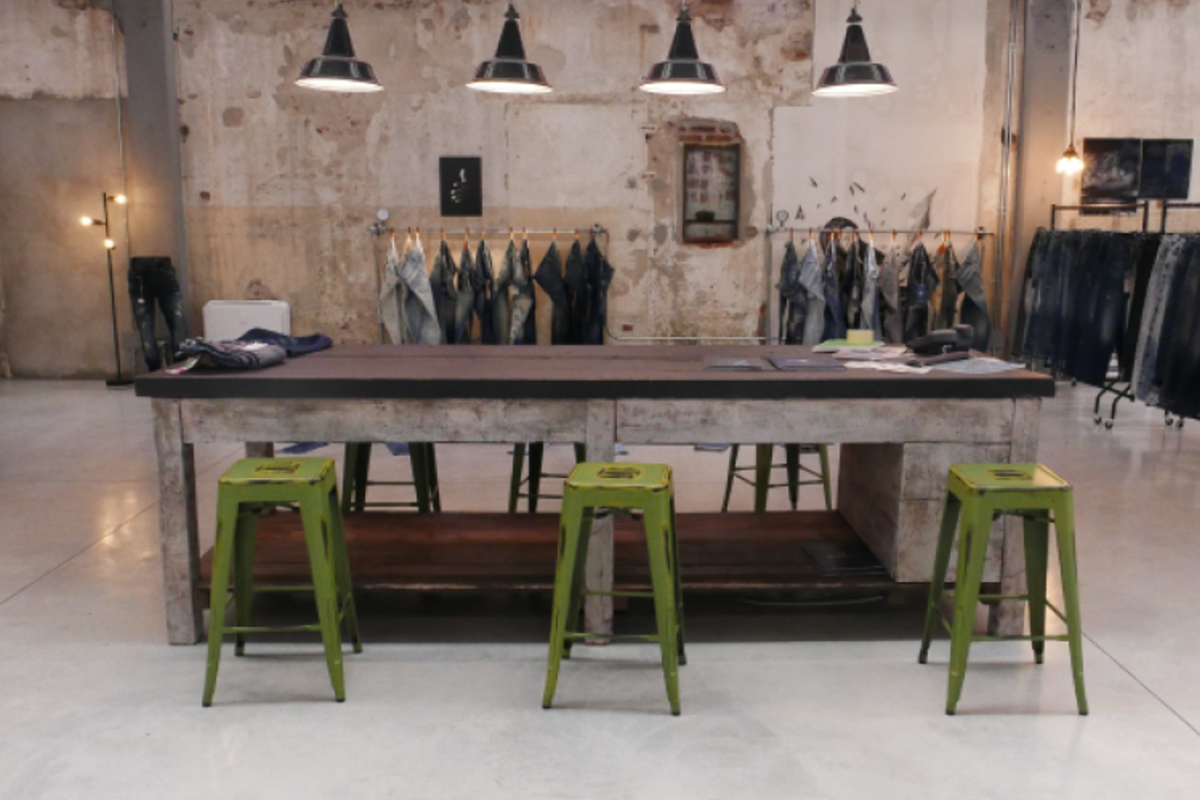
We heard there are almost 1000 chemical companies in the world. It should seem to us with this quantity, there is no way to ever know provenance. Can this continue?
ANDREA VENIER: Of course, 1000 chemical companies means 999 competitors. The problem here is some competitors play different games with different rules. Europe has some of the most strict regulations in the world. They really pushed us during the last 15 years to reformulate new products based on different chemistry involved. A lot of the work has been done in Europe, also in the U.S. and in other parts of the world. Globalization has a lot of advantages, but also a lot of limits and one of them is that not all of us are playing with the same rules. I think that the problem is not in the numbers, but it’s in the system. So here also more transparency and traceability can be the solution.
What are you expecting for sustainability in the next few years?
ANDREA VENIER: Our industry should be more focused on a radical change in the approach to new projects. A lot of new technologies are now available to reduce the [harmful] effects of our industry. The designers should start developing new projects based on new technology or a circular approach. Because otherwise, circularity or sustainability is just an accessory to the clothes — just to claim something for the marketing proposal. Not in all the cases, of course. There are some brands that are [doing] a really amazing job on sustainability. But most still just think small, just to claim “we are sustainable.” We have to work harder to design a better, sustainable model where circularity represents the new sustainability. Circularity not only when it comes to the material but also, for example, the water. In the textile industry, water is used as a vehicle for colors and chemicals. We have a lot of new technologies — from the chemical point of view, but also from the machinery point of view — to reduce water consumption or to reuse water. The big change that I’m expecting will be in the approach. Fashion, unfortunately, is still deeply rooted in a linear approach: Make, use, dispose. We need first to involve young designers and technicians to develop products based on this circular code.
Biella: Historical Center for Luxury Textiles

Located about an hour northwest of Milan, the city of Biella has a long history as a textile center. Some of the oldest records indicate the city was home to a well-established and thriving wool industry back in the 13th century.
In later centuries, it also became home to silk mills, as well, but the city’s location at the foot of Alps helped it earn the nickname the “città della lana” (city of wool) thanks to its ideal location for sheep herding and the hard Alpine water used to clean the wool and for the textile production process.
Today Biella is associated with luxury fabrics, particularly the superfine wool used for menswear. Upscale brands such as Ermenegildo Zegna, Loro Piana and Cerruti 1881 are headquartered in Biella, as are many of the mills and suppliers that cater to these companies.
Michelangelo Pistoletto and Cittadellarte is a new model of artistic and cultural institution that places art in direct interaction with the different sectors of society.
A place where ideas and projects that combine creativity and entrepreneurship, education and production, ecology and architecture, politics, and spirituality, converge. An organism intended to produce civilization, activating an essential and compelling responsible social change at both local and global level.
The social mission of Cittadellarte is integrated into the myth of the Third Paradise.
https://www.biellacittacreativa.it/en/
